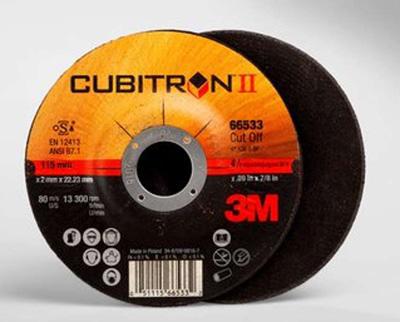
The Cubitron II cut-off wheel from 3M is designed to provide high cut rates and long life on stainless steels, alloy steels and cast iron. Specially formulated to provide high cut rates and long life on stainless steels, alloy steels and cast iron.
With decades of experience in ceramic, abrasive and microreplication technologies, 3M has reportedly reinvented abrasives with 3M Cubitron II Products. Starting with a patented, precision-shaped ceramic abrasive grain, 3M engineers found a way to electrostatically orient each triangular structure to maximize cutting potential. The result: Each individual precision-shaped ceramic grain acts like a cutting tool, slicing through metal like a knife, and continuously self-sharpens as points break off. This allows 3M Cubitron II belts, discs, and bonded wheels to run cooler and keep on working long after conventional abrasives have dulled, shelled, glazed over and been thrown out, according to the company.
Contact Details
Related Glossary Terms
- abrasive
abrasive
Substance used for grinding, honing, lapping, superfinishing and polishing. Examples include garnet, emery, corundum, silicon carbide, cubic boron nitride and diamond in various grit sizes.
- alloy steels
alloy steels
Steel containing specified quantities of alloying elements (other than carbon and the commonly accepted amounts of manganese, sulfur and phosphorus) added to cause changes in the metal’s mechanical and/or physical properties. Principal alloying elements are nickel, chromium, molybdenum and silicon. Some grades of alloy steels contain one or more of these elements: vanadium, boron, lead and copper.
- stainless steels
stainless steels
Stainless steels possess high strength, heat resistance, excellent workability and erosion resistance. Four general classes have been developed to cover a range of mechanical and physical properties for particular applications. The four classes are: the austenitic types of the chromium-nickel-manganese 200 series and the chromium-nickel 300 series; the martensitic types of the chromium, hardenable 400 series; the chromium, nonhardenable 400-series ferritic types; and the precipitation-hardening type of chromium-nickel alloys with additional elements that are hardenable by solution treating and aging.
